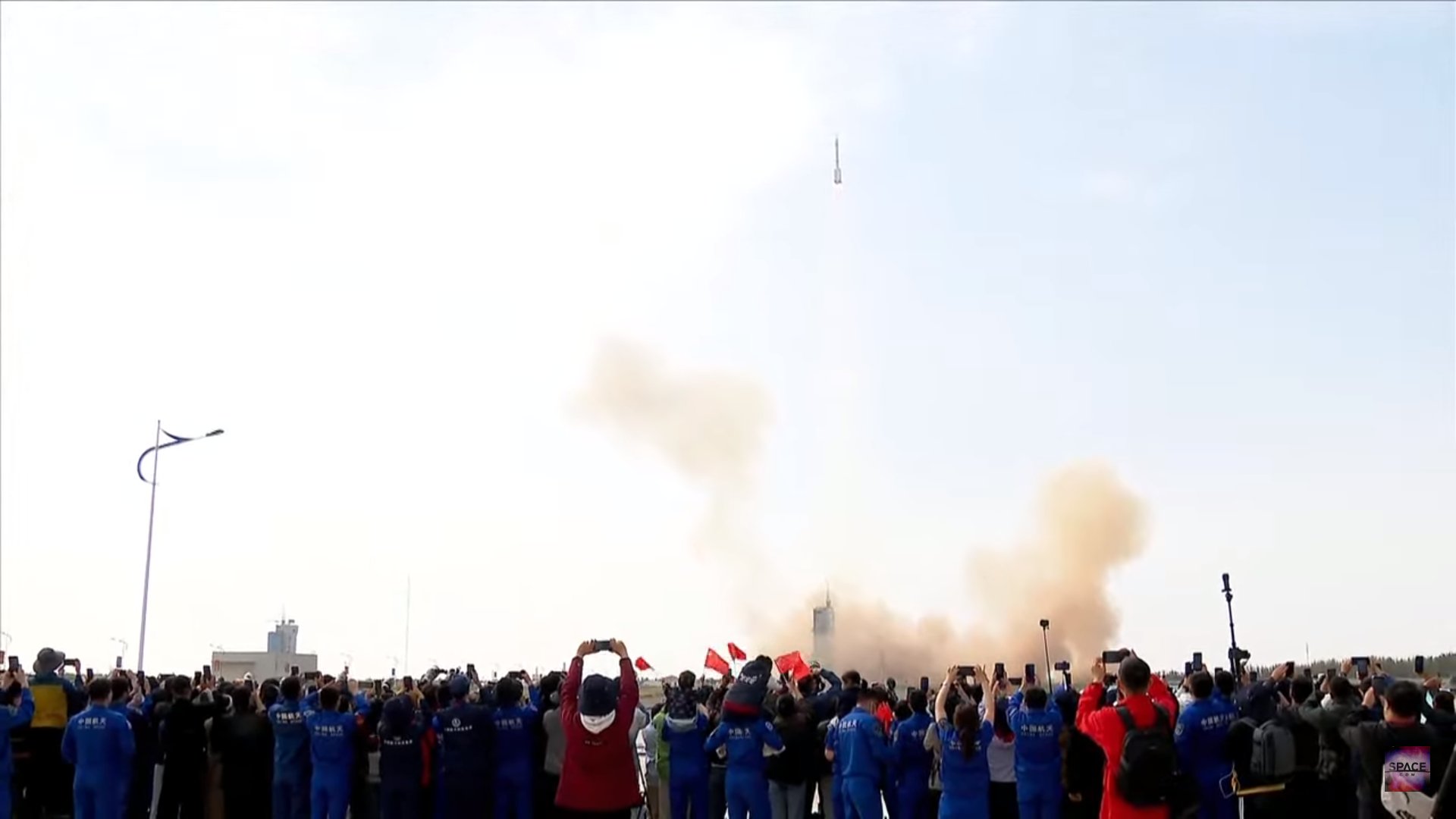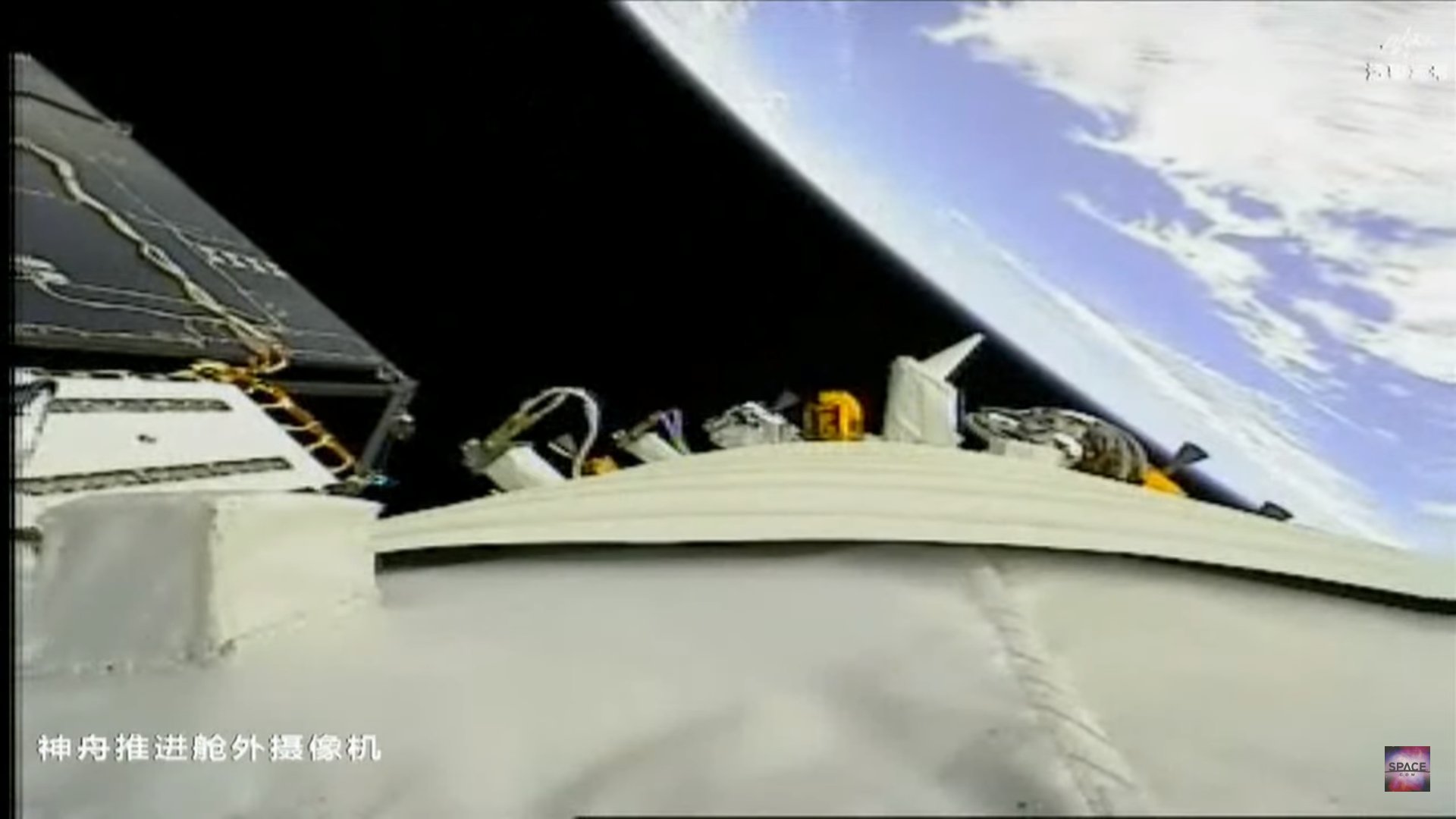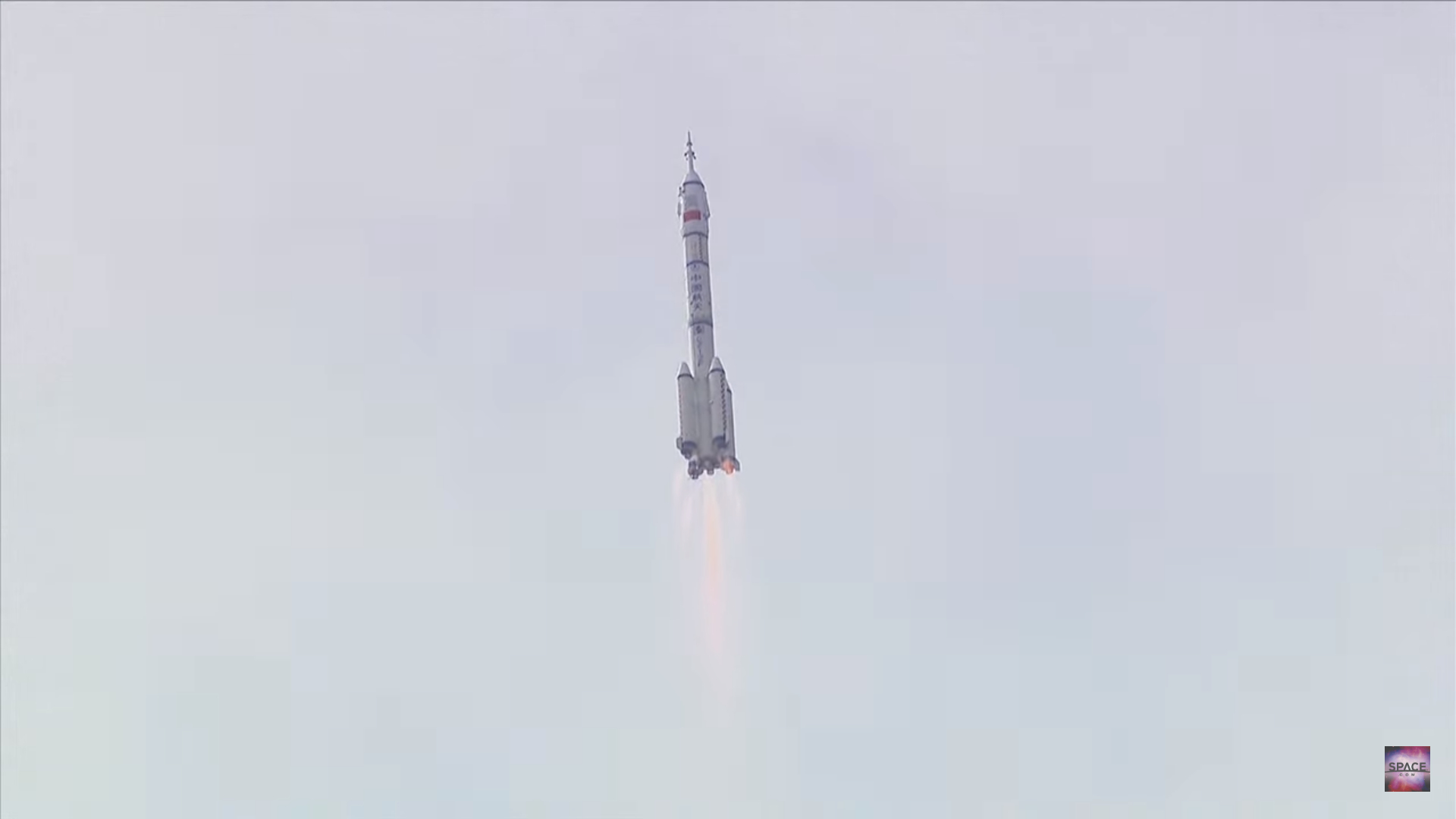China launches 3 astronauts to Tiangong space station on Shenzhou 16 spacecraft (video)
It's China's fifth crew to Tiangong.
A new crew of three astronauts is on its way to China's Tiangong space station.
A Long March 2F rocket launched the Shenzhou 16 crew spacecraft from the Jiuquan Satellite Launch Center in the Gobi Desert today (May 29) at 9:31 p.m. EDT (0131 GMT; 9:31 p.m. local time on May 30). Spacecraft separation occurred around 10 minutes later, according to the China National Space Administration, which declared the launch "a complete success."
Jing Haipeng (the mission's commander) and rookies Zhu Yangzhu and Gui Haichao — the first members of a third astronaut selection group to fly to space — are set to spend six months aboard the Tiangong space station. CNSA officials announced the crew just one day before launch.
Related: China's Long March rocket family: History and photos
Jing Haipeng is a veteran of the Shenzhou 7, 9 and 11 missions, while Zhu Yangzhu and Gui Haichao are heading to orbit for the first time. Zhu is a spaceflight engineer and was selected in China's third batch of astronauts in 2020. Gui is also from the third astronaut group and will be China's first payload specialist to fly to Tiangong.
"It is a great honor for me to serve as the commander for the third time. This time, I am mainly responsible for organization and coordination, including space-Earth communication and mission command," Jing told reporters in the press conference. "In particular, I have to ensure the safety of the mission and our crew."
After reaching orbit and docking with Tiangong, the crew will be greeted aboard the space station by the outpost's current Shenzhou 15 crew. Mission commander Fei Junlong and crewmates Deng Qingming and Zhang Lu have been aboard Tiangong since November and will hand over control of the space station to the new crew before returning home in early June.
China completed its three-module Tiangong in late 2022 and aims to keep the orbital outpost permanently occupied for at least a decade. The station is about 20% as massive as the International Space Station, according to Chinese space officials.
Breaking space news, the latest updates on rocket launches, skywatching events and more!
The country is also looking to see foreign astronauts travel to Tiangong, as well as open the space station to potential tourist visits.
Earlier this month China also launched the Tianzhou 6 cargo spacecraft to Tiangong to deliver supplies for the six-month-long Shenzhou 16 mission, as well as science experiments, equipment and propellant for the space station to maintain its orbit.



Preparations for the launch of Shenzhou 16 have proceeded well, according to Chinese state media press reports. The Beijing Aerospace Flight Control Center, Jiuquan Satellite Launch Center and Xi'an Satellite Control Center, working in concert with other tracking stations and Yuanwang tracking vessels, conducted a launch rehearsal on May 28 Beijing time.
Dai Xiangjun, senior engineer at Xi'an Satellite Control Center, told CCTV that both equipment and personnel were ready for the launch of Shenzhou 16.
Meanwhile, the Long March 2F rocket to launch the Shenzhou 17 mission in six months' time is also ready at Jiuquan. It will be maintained in a state or near-readiness in case it is required to be used as a lifeboat for the Shenzhou 16 crew.
"Our Long March 2F Yao 17 carrier rocket entered the launch area in April 2023 and has undergone assembly, hoisting, and testing. It is now in a standby state, ready to be launched at a moment's notice," Song Jing, chief designer of the Long March 2F rocket ground system, told CCTV.
China has prepared Shenzhou and Long March 2F rockets for potential emergencies as part of its operation of the Tiangong space station. China’s human spaceflight agency has previously revealed that the rocket and spacecraft can be readied to launch with 8.5 days' notice.

Andrew is a freelance space journalist with a focus on reporting on China's rapidly growing space sector. He began writing for Space.com in 2019 and writes for SpaceNews, IEEE Spectrum, National Geographic, Sky & Telescope, New Scientist and others. Andrew first caught the space bug when, as a youngster, he saw Voyager images of other worlds in our solar system for the first time. Away from space, Andrew enjoys trail running in the forests of Finland. You can follow him on Twitter @AJ_FI.


